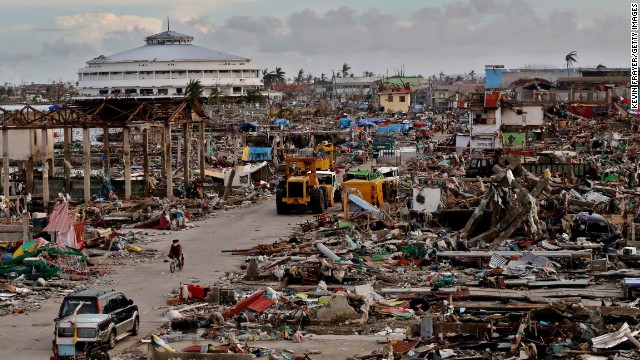
Only 11% of the fatalities from typhoon Yolanda (international name: Haiyan) in this city have been identified so far.
"We can only examine up to 40 bodies everyday, but there are many remains that have been retrieved. We’re not constrained by the method of identification but by the number of bodies," said Raul Alcantara, head of the second team of National Bureau of Investigation (NBI) experts deployed to this city to identify the dead.
Mr. Alcantara said most were in an advanced state of decomposition, further hindering the identification process. Instead of simply using fingerprints to identify the bodies, the team has to conduct dental examination and DNA (deoxyribonucleic acid) tests.
Those that have been buried will also be exhumed for examination.
"Even if these bodies will be examined, the identification process is a challenge if there are no dental records available. We also need at least three living immediate family members for comparison to complete the DNA testing," Mr. Alcantara explained.
Since it launched retrieval of bodies after the storm, the task force on cadaver collection has recovered 2,321 bodies in this city alone. Only 245 bodies have been identified as of this week.
"They were identified by their relatives through clothing and [pieces of] jewelry," the NBI official said.
From Dec. 4 to Dec. 8, the task force led by the Bureau of Fire Protection (BFP) has recovered 106 more cadavers in the city’s San Jose district, Magallanes Street, Anibong village, Nula-Tula village, and the shoreline near the San Juanico Bridge.
"We expect to retrieve more bodies as seawaters subsided in low-lying areas and storm debris have been cleared in coastal communities," said Sr. Supt. Pablito Cordeta, BFP regional director and task force head.
The team also asked the Department of Health to provide more body bags and step up its support in burying remains.
In a briefing, City Administrator Tecson John Lim said there were reports that some bodies were buried by residents outside mass grave sites without knowledge of authorities. "It’s hard to account for bodies that were buried outside the designated grave site," Mr. Lim said.
As of Sunday afternoon, the Department of the Interior and Local Government (DILG) reported 5,582 deaths in Eastern Visayas with 1,729 persons still missing after the typhoon slammed into central Philippines on Nov. 8.
Some 517,579 houses were destroyed, displacing about 479,000 families in Eastern Visayas.
Meanwhile, an official of the National Competitiveness Council (NCC) said Western Visayas can immediately recover from the effects of typhoon Yolanda despite wreaking havoc on the agriculture and fisheries sectors in the region.
Guillermo M. Luz, NCC co-chairman, said Western Visayas can boost its economic growth faster than other areas hit by Yolanda.
Mr. Luz, who led an NCC roadshow in Iloilo City on Friday, cited the fast-paced growth in Iloilo City, which is the economic and political capital of Western Visayas. "You are relatively lucky because Yolanda did not directly hit Iloilo City where everything is up and running. There is no downtime in growth here because of various investments and developments. Had the typhoon directly hit the city, the magnitude of destruction would impact heavily on the economic and social sectors," he added.
He also cited Iloilo’s recovery in the aftermath of typhoon Frank (international name: Fengshen) in 2008.
He said Iloilo City emerged second in the overall competitiveness ranking of top 10 cities in the Philippines five years after typhoon Frank struck.
"The city made adjustments after typhoon Frank and the resiliency of the local government unit in the face of disasters paid off," he added.
Tuesday 10 December 2013
http://www.bworldonline.com/content.php?section=Nation&title=NBI-identifies-only-11%-of-recovered-typhoon-victims&id=80524

0 comments:
Post a Comment